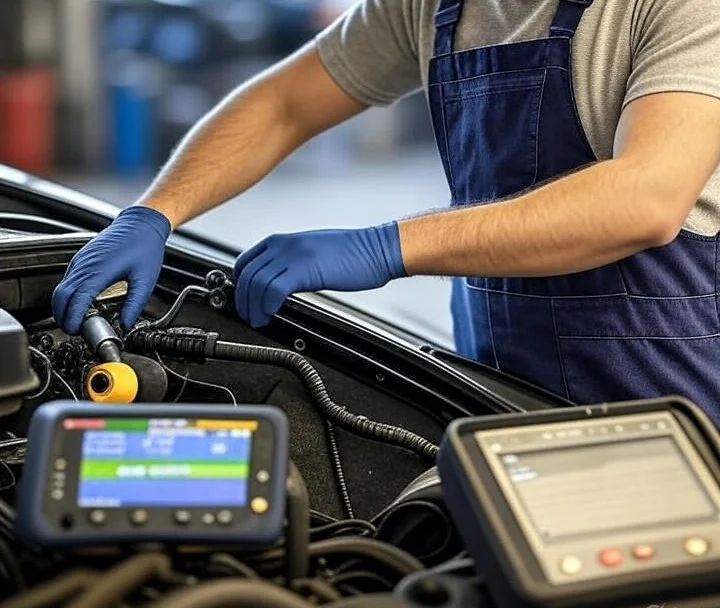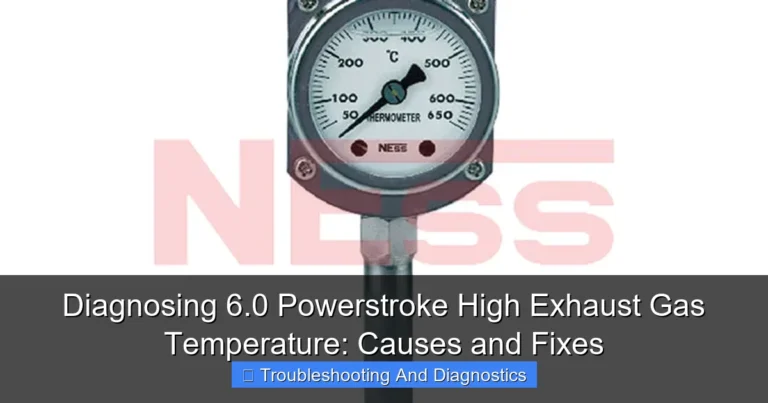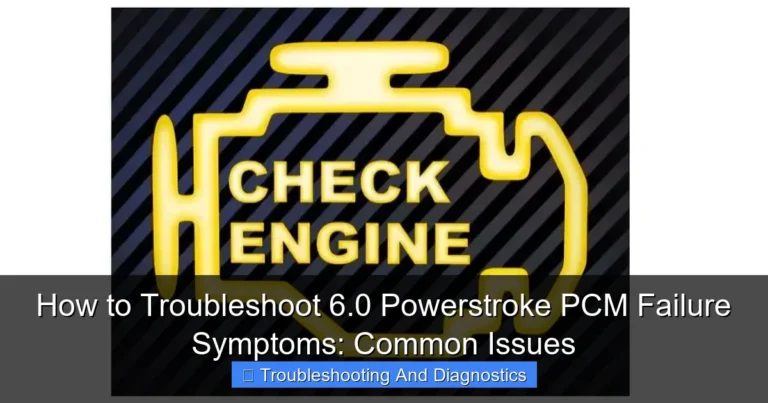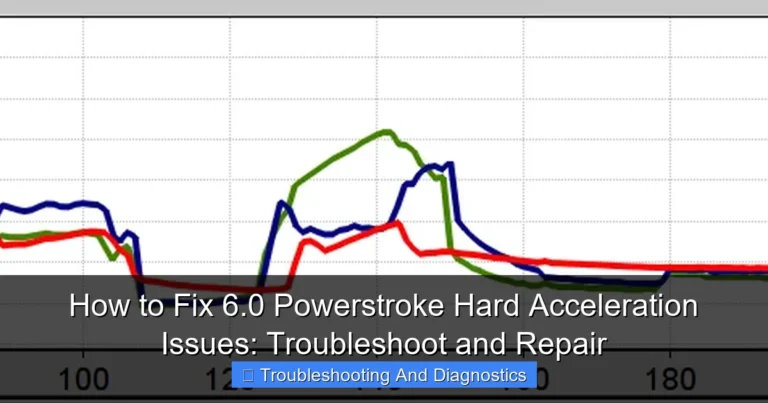Troubleshooting The 6.0 Powerstroke IPR Valve
My Ford Powerstroke 6.0 started sputtering the other day, leaving me stranded on the side of the road. After some frantic calls, I learned it might be the 6.0 Powerstroke IPR valve. This experience taught me the importance of understanding this crucial component. This post will guide you through diagnosing, understanding, and potentially fixing issues related to your 6.0 Powerstroke IPR valve, saving you time, money, and stress.
Understanding the 6.0 Powerstroke IPR Valve
This section explains the function of the Injection Pressure Regulator (IPR) valve in the 6.0 Powerstroke engine. We’ll cover its role in fuel delivery and how malfunctions impact engine performance. You’ll learn how to identify symptoms of a failing IPR valve and what steps you can take to troubleshoot it.
The IPR Valve’s Role in Fuel Injection
The IPR valve precisely controls the fuel pressure within the high-pressure oil system of the 6.0 Powerstroke engine. It regulates how much oil reaches the injectors, directly influencing the amount of fuel injected into each cylinder. Accurate pressure regulation is crucial for optimal combustion and engine performance.
- Precise Fuel Delivery: The IPR valve ensures consistent fuel pressure across all cylinders for balanced and efficient combustion. Any inconsistencies directly translate to uneven power delivery and potentially engine damage.
- Engine Performance: Proper functioning of the IPR valve is vital for maintaining optimal engine performance, power output, and fuel economy. Malfunctions will be immediately apparent.
- Protection from Damage: By regulating oil pressure, the IPR valve protects the delicate high-pressure fuel system components from excessive pressure. Damage can result in costly repairs.
Symptoms of a Failing IPR Valve
A malfunctioning IPR valve often presents a range of symptoms, from minor performance issues to complete engine failure. Identifying these symptoms early can help prevent more serious damage.
- Rough Idle: The engine may exhibit a rough idle, particularly at start-up, due to inconsistent fuel injection.
- Lack of Power: A malfunctioning IPR valve can significantly reduce engine power output, especially under load.
- Excessive Smoke: Uncontrolled fuel injection can cause excessive black or blue smoke from the exhaust.
- Check Engine Light: The illuminated check engine light is a common indicator of problems within the fuel delivery system.
Diagnosing 6.0 Powerstroke IPR Valve Problems
This section provides step-by-step instructions for diagnosing a faulty 6.0 Powerstroke IPR valve. We’ll discuss using diagnostic tools, interpreting data, and avoiding common mistakes. Knowing how to perform a proper diagnosis will save you valuable time and prevent unnecessary repairs.
Using a Diagnostic Scanner
A diagnostic scanner, such as an OBD-II reader, allows access to real-time data from the engine’s computer. This data can reveal discrepancies in fuel pressure and other parameters indicative of IPR valve problems. It is a vital first step in the diagnostic process.
- Real-time Data: The scanner displays current fuel pressure readings, which should be within the manufacturer’s specifications.
- Diagnostic Trouble Codes (DTCs): The scanner can identify DTCs related to fuel system malfunctions, further pointing towards a faulty IPR valve.
- Data Logging: Some advanced scanners allow for data logging, providing a detailed record of engine performance parameters over time.
Checking for Mechanical Issues
While a diagnostic scanner focuses on the electrical aspects of the IPR valve, it’s important to also check for any mechanical issues that could be contributing to problems. This includes verifying proper valve operation and inspecting for any physical damage.
- Visual Inspection: Inspect the valve for any signs of physical damage, such as cracks or leaks.
- Valve Movement: Check the mechanical movement of the valve to ensure it operates smoothly. A sticky or seized valve will not function properly.
- Wiring and Connections: Examine the wiring harness and connectors for any damage or corrosion, which could also cause problems.
Interpreting Diagnostic Data
Interpreting data from a diagnostic scanner and a visual inspection requires some understanding of engine operation and the 6.0 Powerstroke system. This section helps interpret codes and pressure readings to isolate the problem.
- Pressure Readings: Compare live data readings against manufacturer specifications. Significant deviations could indicate a failing IPR valve.
- DTC Correlation: Cross-reference diagnostic trouble codes with known issues related to the IPR valve and the fuel system.
- Combining Data: Combine data from the scanner with your visual inspection findings to reach a comprehensive diagnosis. Don’t overlook any aspect.
Replacing the 6.0 Powerstroke IPR Valve
This section details the process of replacing the IPR valve, a task best undertaken with some mechanical experience. Proper techniques are key to avoid further complications. We’ll cover necessary tools, step-by-step instructions, and post-replacement checks.
Tools and Materials
Replacing the IPR valve requires specific tools and parts. Having everything prepared beforehand will make the process much smoother and faster.
- New IPR Valve: Ensure you purchase a high-quality replacement IPR valve from a reputable supplier.
- Sockets and Wrenches: A variety of sockets and wrenches are needed to access and remove the valve.
- Torque Wrench: A torque wrench is essential to tighten bolts to the correct specifications, preventing damage.
- Clean Rags: Keep rags handy to clean up spilled oil and debris.
Step-by-Step Replacement
The following steps are a general outline; consult a repair manual specific to your vehicle for detailed instructions and torque specifications. Improper installation can damage the engine.
- Disconnect the battery negative terminal.
- Locate the IPR valve on the high-pressure oil rail.
- Disconnect the electrical connector and fuel lines from the valve.
- Carefully remove the IPR valve using the appropriate wrench.
- Install the new IPR valve and reconnect the fuel lines and electrical connector.
- Reconnect the battery.
- Start the engine and check for leaks.
Post-Replacement Checks
After replacing the IPR valve, it’s crucial to conduct thorough checks to ensure the replacement was successful. This may involve using the diagnostic scanner again to monitor fuel pressure and engine parameters.
- Check for Leaks: Inspect all connections for leaks after starting the engine. Even a small leak can cause problems.
- Diagnostic Scanner Check: Use the diagnostic scanner to monitor fuel pressure and other relevant parameters to confirm proper operation.
- Test Drive: Take the vehicle for a test drive to assess its overall performance. Pay attention to idle quality and power delivery.
Common Myths About the 6.0 Powerstroke IPR Valve
This section debunks common misconceptions surrounding the 6.0 Powerstroke IPR valve, providing clarity and avoiding unnecessary repairs. Understanding these myths can save you time and money.
Myth 1: A noisy IPR valve always means it’s bad.
While a noisy IPR valve can indicate a problem, it’s not always a sign of imminent failure. Some noise is normal; however, excessive or changing noise warrants investigation.
Myth 2: Replacing the IPR valve always solves all performance issues.
A faulty IPR valve can certainly cause performance issues, but it’s not the only possible cause. Other components, such as injectors or the high-pressure oil pump, might also be faulty.
Myth 3: The IPR valve is incredibly difficult to replace.
While it requires some mechanical skill, replacing the IPR valve is generally manageable for competent DIY mechanics. However, incorrect installation can cause damage, so consult a repair manual.
FAQ
What are the most common signs of a bad 6.0 Powerstroke IPR valve?
Common signs include rough idling, a lack of power, excessive smoke from the exhaust, and a check engine light illuminated. These issues are often related to inconsistent or incorrect fuel delivery.
How much does it cost to replace a 6.0 Powerstroke IPR valve?
The cost varies depending on whether you perform the repair yourself or use a mechanic. The part itself is relatively inexpensive, but labor costs can significantly increase the total expense.
Can a bad IPR valve damage my engine?
Yes, a faulty IPR valve can lead to engine damage due to improper fuel delivery and potentially excessive pressure within the high-pressure oil system. Prompt diagnosis and repair are crucial.
How long does it typically take to replace the IPR valve?
The replacement process generally takes a few hours for experienced mechanics, but it can be longer for those unfamiliar with the 6.0 Powerstroke engine.
Is it difficult to replace the IPR valve myself?
The difficulty depends on your mechanical experience. While it’s possible for experienced DIYers, beginners might find it challenging. A repair manual is strongly recommended.
Can I drive my truck with a bad IPR valve?
While you might be able to drive short distances, it is not recommended to drive for extended periods with a faulty IPR valve as it can cause further engine damage.
How often should I check my 6.0 Powerstroke IPR valve?
Regular checks are not typically necessary unless you are experiencing symptoms of a problem. As part of routine maintenance, it’s a good idea to include it in your fuel system inspection during an oil change.
Final Thoughts
Understanding the 6.0 Powerstroke IPR valve and its function is crucial for maintaining the health and performance of your engine. By learning to identify the symptoms of a failing valve, conducting a proper diagnosis, and following the correct replacement procedures, you can avoid costly repairs and ensure your truck continues running smoothly. Don’t hesitate to consult a professional if you’re unsure about any part of this process. Remember, preventative maintenance can significantly extend the life of your engine.







